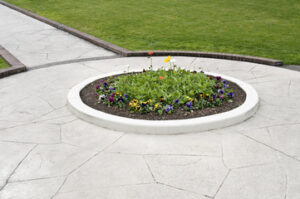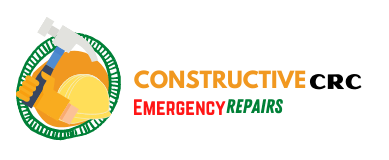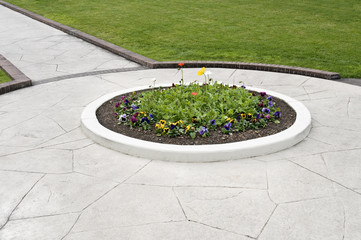Stamped Concrete Charles Town WV is durable and visually appealing, making it ideal for patios and outdoor kitchens. It also reduces fire hazards by providing a heat-resistant surface for combustible cooking appliances.
This unique process uses rubber stamps or texturizing mats to imprint a pattern into wet concrete. The color and texture choices can mimic brick, cobblestone, slate, wood, or other natural materials.
Concrete stamping is a way to add visual appeal to your home’s outdoor surfaces that mimics the look of more expensive materials such as stone, tile or wood planks. The result is an eye-catching surface that’s both durable and affordable.
When selecting a decorative concrete pattern, consider your home’s architectural style and the surrounding landscape. For example, if your home has a classic brick exterior, consider matching the pattern on the patio with the color of the bricks. A stamped overlay of concrete can also be used for an outdoor kitchen and barbecue area to reduce fire hazards from combustible cooking equipment, while providing an attractive area for friends and family to relax while waiting for food to cook.
There are several different types of stamped concrete patterns to choose from. Some of them are seamless, while others feature noticeable seams and joints like field or flagstone designs. Seamless concrete stamps usually have larger dimensions and are easier to work with than other types of stamped patterns.
If you’re working with a stamped concrete project that requires multiple people, it’s helpful to divide the work into different sections and assign specific tasks to each member of your crew. For example, one person can start the process by placing and standing on the starter tools to begin advancing the concrete, while another can do the tamping.
After the concrete is poured and stamped, it should be allowed to cure for several weeks before applying a sealer. When sealing stamped concrete, it’s recommended to use a roller to spread the sealer evenly across the surface. A light touch is generally more effective than a heavy application, which could trap moisture in the slab and cause it to crack over time.
Base Color
Using stamped concrete as an alternative to traditional materials, such as flagstone, brick or natural stone, allows homeowners to customize the look of their outdoor spaces. It can be made to mimic a variety of other building products, like granite or slate, and comes in a wide range of colors. It can also be molded into geometric shapes, like hexagons or circles. The color of the concrete can either match that of the home or accent the surrounding landscape and foliage.
The base color of the concrete is determined at the time of pouring. Two different coloring options are available to the homeowner: integral color and surface-applied color hardener. Integral color is mixed directly into the concrete at the ready-mix plant or on site by our professional installation crews. This option is preferred by many of our clients because it creates a more consistent color throughout the entire surface.
However, the advantage of having integral color does come with a disadvantage; because the color is mixed into the concrete, it is vulnerable to chipping and cracking which can reveal the original concrete aggregate underneath. To prevent this, a coating is applied over the concrete to protect it from damage. This is called a sealer and it can be purchased from most home improvement centers, such as Clear Guard(r) Cure & Seal.
For the most popular color options for stamped concrete, gray is an excellent choice because it works well with most homes. However, if you are trying to replicate a particular style, like limestone or marble, dark shades, like charcoal and black work well too. Adding streaks of color with a release is another way to add natural-looking color variation to the concrete.
Accent Color
Concrete is a durable, versatile material that can be used in a variety of ways to produce unique outdoor surfaces. Whether it’s a new patio, pool deck, driveway or sidewalk, stamped concrete provides a creative alternative to other costly building materials such as stone, slate or brick.
A popular option is to use textured rubber stamps or “skin” mats to imprint patterns into wet concrete, giving it the look and feel of stone, cobblestone, wood planks, brick or other rough textured materials. This process can also be used on existing concrete to add color and texture or even make a basement floor more appealing.
To help the stamped concrete mimic the appearance of these other natural materials, it is often tinted or stained with a secondary accent color. These color tones can be added using a powdered release agent or a liquid acrylic stain like Butterfield’s TruTique Antique Wash. Often contractors will combine these coloring products to achieve subtle tonal variations or “antiquing” effects in their colored stamped concrete projects.
These color tones will be left in the low points and depressions of the textured stamp impression, providing definition, character and a realistic finish to your decorative texture. These colors are referred to as your “Secondary Color” or “Release” color.
To produce a multi-colored, variegated or “antiqued” effect on a concrete surface, contractors typically start with a primary integral color, then apply a darker secondary accent color (powder release or a liquid acrylic stain) over the top of the wet concrete. The result is a rich, natural looking, durable colored concrete surface. This technique is also ideal for restoring dull, worn, faded or weathered stamped concrete or textured overlays.
Release Agent
When used correctly, a concrete release agent helps keep the stamps or texturing skins from sticking to the fresh overlay or concrete surface. This enables the contractor to get clean, precise imprints. Concrete releasing agents are available in powder or liquid form. They are typically sprayed onto the concrete just before stamping.
Many contractors use a different color of release agent to create accent colors on stamped concrete surfaces. This technique works especially well on light concrete base colors, such as integrally colored or color hardened concrete. The darker release agent is washed away during the stamping process, but a portion of it remains embedded in the textured concrete surface, providing a subtle color accent once the concrete has been washed and sealed.
The concrete is typically sprayed with a liquid release agent using a pump-type sprayer or sprayed directly onto the texture mat before stamping. Contractors can also tint the liquid release agent for a more uniform, even color distribution. If tinting the release agent, it is advisable to add the tint a day or two before beginning to stamp so that the pigment particles have time to fully dissolve.
A tampico brush about 8 inches wide is typically used to apply the release agent. It’s important to apply a thin, uniform layer of the product to prevent it from interfering with the stamp or texture imprint. Then, contractors begin the stamping process by firmly pressing the stamp or textured skin into the fresh concrete surface. The resulting textured or stamped concrete is then washed and sealed for long-lasting protection. Over time, the concrete will be subjected to weathering and abrasion from automobile traffic, de-icing salts and chemical exposure. Periodic washings with a mild detergent help to maintain surface luster and protect the concrete from staining and damage.
Stamping
The stamping process involves using rubber stamps or texturizing mats to imprint a pattern into wet concrete. This can be done on new or existing concrete, and it can make the surface resemble a variety of different materials, such as stone, wood, brick or cobblestone. This technique can be used to make patios, driveways, pool decks and more. It’s often more affordable than paving materials, and it can be very durable if properly maintained.
To get the best results from your stamped concrete, it’s important to use high-quality stamps and a good quality concrete mix. It’s also a good idea to use a color hardener that will last a long time, and to add a release agent to the concrete before you stamp it. Adding the release agent helps prevent the concrete from sticking to the stamp and making it difficult to remove.
When you’re ready to begin stamping, it’s important to work quickly and efficiently. Most concrete sets up quickly, so you need to begin stamping it before it dries too much. If you wait too long, the stamps will have a hard time getting into the concrete and will leave little to no texture behind them.
It’s also a good idea to pre-texture the slab perimeter about 1 to 2 feet with a flex mat or texturizing skin before you begin. This will help you get a more uniform texture across the entire slab. You should also start in the middle of the slab and work outward, instead of starting at one end. This will eliminate the common problem of having great texture where the stamping began, but almost none at the far edges of the slab.

